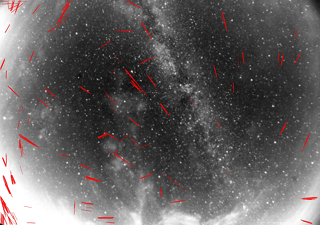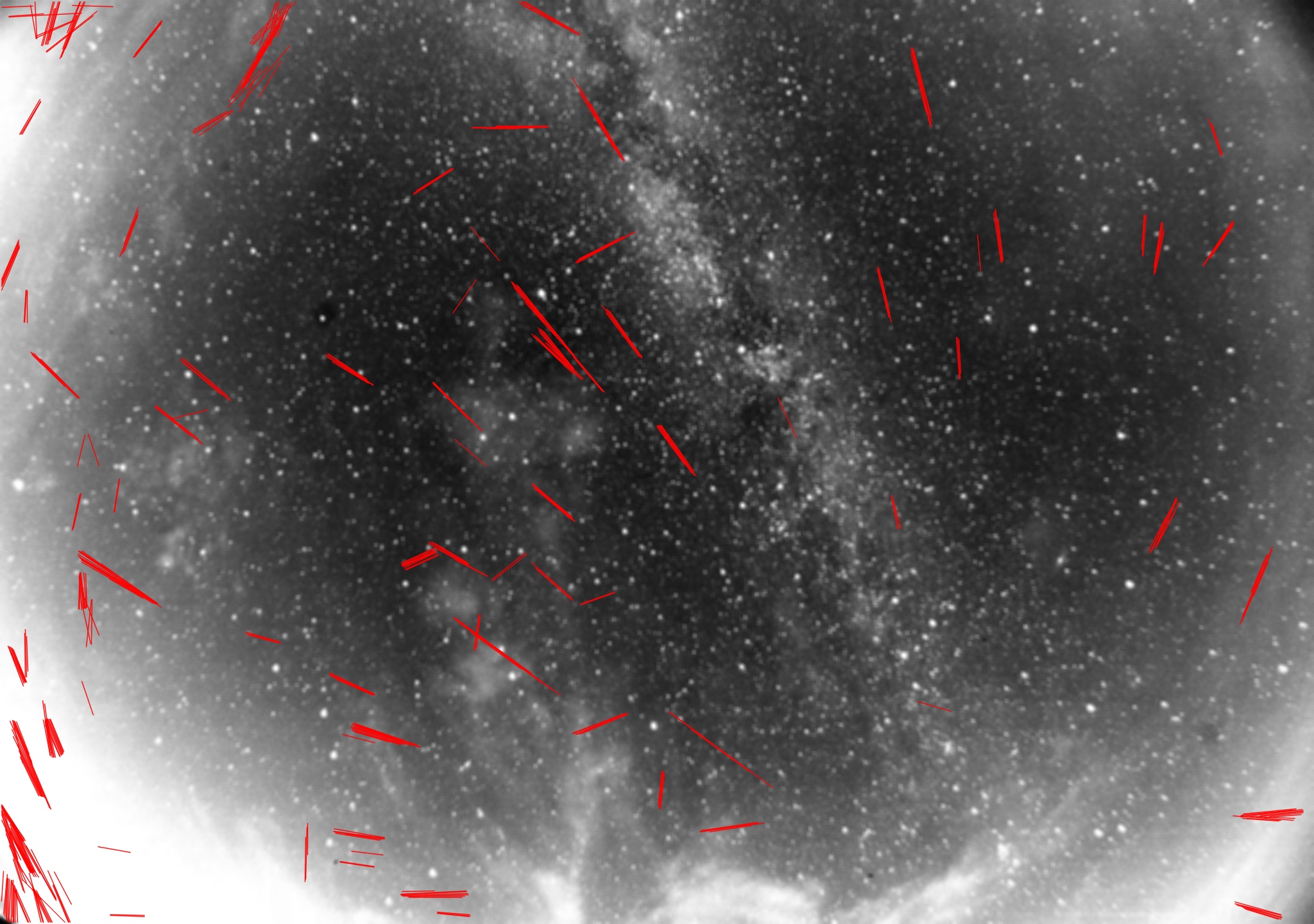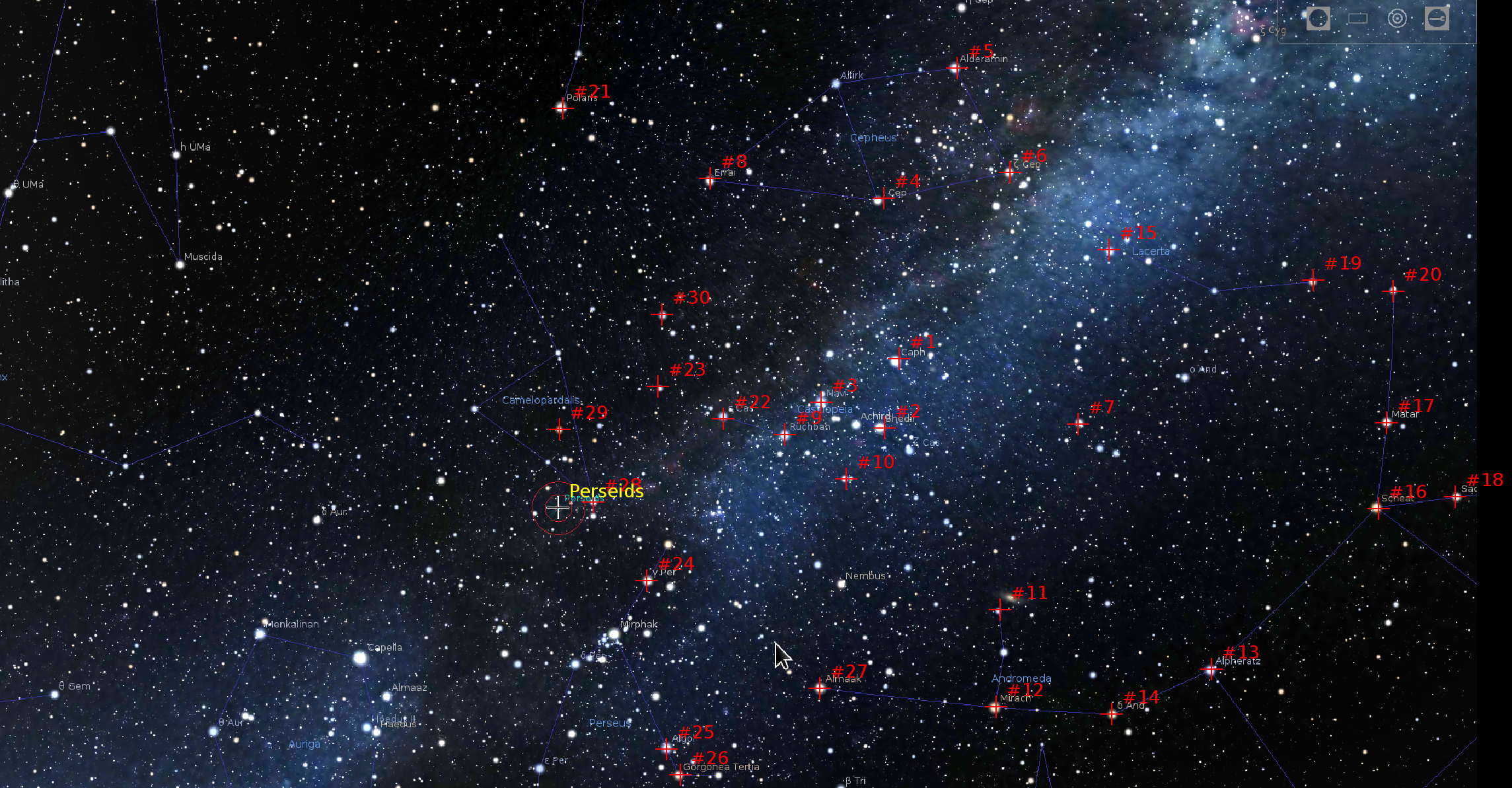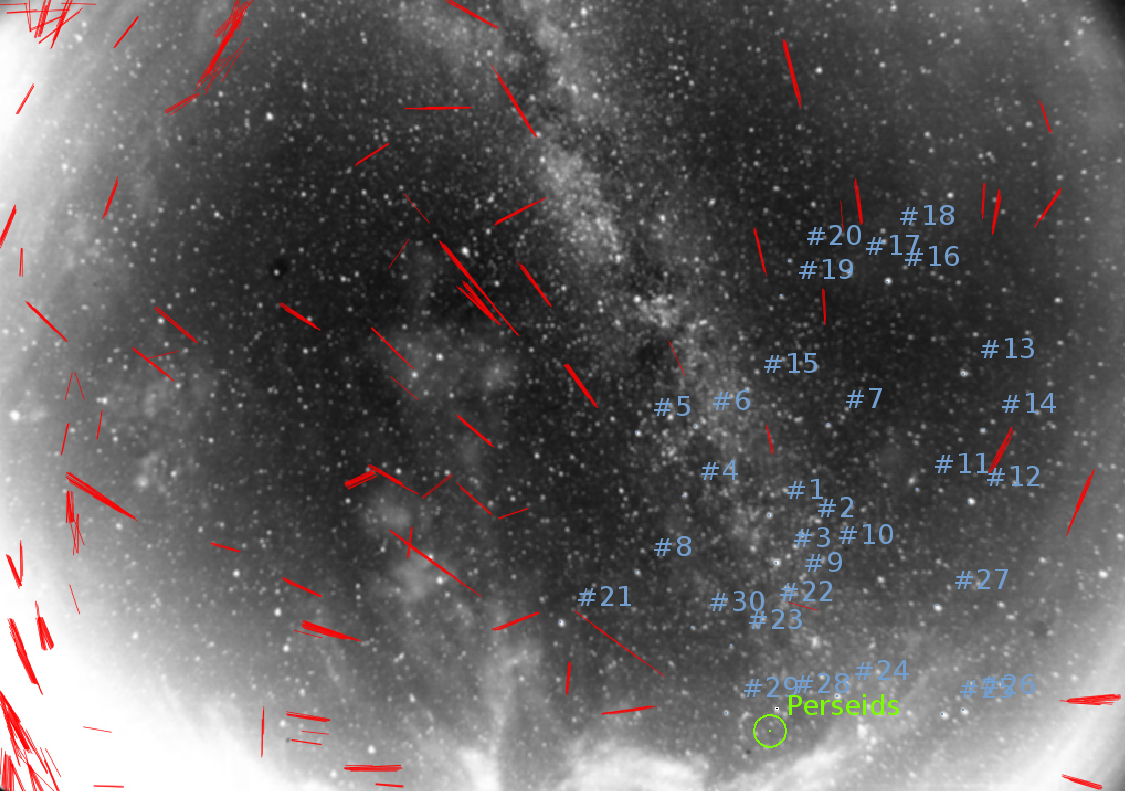Nightlife sky or in search of Perseid - processing
 Recently on Habré was published an article with the filming of the night sky "Nightlife of the sky or in search of Perseid . " But the authors themselves could not detect the meteors because of the large number of satellites, which in this case are false objects. I could not pass by, I decided to process the video, and see if there are Perseids on it or not.
Recently on Habré was published an article with the filming of the night sky "Nightlife of the sky or in search of Perseid . " But the authors themselves could not detect the meteors because of the large number of satellites, which in this case are false objects. I could not pass by, I decided to process the video, and see if there are Perseids on it or not.To begin, I built a video without the background of stars using the BackgroundSubtractorMOG2 tool from OpenCV. To suppress "noise" positives caused by video compression, an averaging filter with a 3x3 window was applied to each frame, and a opening operation was applied to the image of moving objects to suppress small operations. Without pre-filtering, “checkered” was clearly visible on the motion map. The first three frames removed from processing, because The BackgroundSubtractorMOG2 algorithm has not yet accumulated motion information on them.
code
int generate_meteor_lines() { cv::VideoCapture cap; cap.open(videoname); if(!cap.isOpened()) { printf("can not open video file\n"); return -1; } cv::namedWindow("foreground image", cv::WINDOW_NORMAL); cv::BackgroundSubtractorMOG2 bg_model; double learning_rate = 0.1; bg_model.setBool("detectShadows", false); bg_model.setDouble("backgroundRatio", 0.95); bg_model.setInt("history", 5); bg_model.setInt("fVarInit", 20); cv::Mat img, fgmask, fgimg; std::cerr << "\n"; for(int frames_count = 0;; ++frames_count) { cap >> img; if(img.empty()) { break; } cv::blur(img, img, cv::Size(3, 3)); if(fgimg.empty()) { fgimg.create(img.size(), img.type()); } bg_model(img, fgmask, learning_rate); fgimg = cv::Scalar::all(0); img.copyTo(fgimg, fgmask); cv::threshold(fgimg, fgimg, 20, 255, cv::THRESH_BINARY); cv::Mat mask(cv::Mat::ones(3, 3, CV_8UC1)); mask.at<char>(0, 0) = 0; mask.at<char>(2, 0) = 0; mask.at<char>(0, 2) = 0; mask.at<char>(2, 2) = 0; cv::erode(fgimg, fgimg, mask); cv::dilate(fgimg, fgimg, mask); if(frames_count > 3) { detect_lines(fgimg); } imshow("foreground image", fgimg); std::cerr << "Frame ##" << frames_count << "\n"; char k = (char)cv::waitKey(30); if(k == 27) { break; } } return 0; } Video after subtracting the background
After viewing it became clear that there are meteors in the video, but their speed is much higher (according to Wikipedia , the apparent speed of the Perseid meteor is about 59 km / s) than the speed of the satellites, and they appear on one or two consecutive frames as a short line. So the eye just does not have time to react to them against the background of bright stars.
Further, to make it easier to search for meteors, I made the simplest detector based on the Hough transform, which highlighted meteors on the original video.
')
Code
std::vector<cv::Vec4i> detect_lines(cv::Mat& img) { cv::Mat coi; std::vector<cv::Vec4i> lines; cv::extractChannel(img, coi, 0); double rho_res = 1; double theta_res = CV_PI / 180; double ithreshold = 50; double minLinLength = 50; double maxLineGap = 2; cv::HoughLinesP(coi, lines, rho_res, theta_res, ithreshold, minLinLength, maxLineGap); draw_line_circles(lines, img); return lines; } And even with illumination it is difficult to understand whether there was a meteor or not. Only if viewed in freeze mode. But after putting all the traces of meteors on the background image, we have a more complete picture. It can be seen that most of the objects "fly out" from the bottom right of the image.
But is there really the constellation Perseus?
I am not a strong starry sky expert, so I took a screenshot of the Stellarium program with Perseids in the center. I chose manually a number of stars that I could match on the “average” background image from the video and the screen shot from Stellarium. Using the coordinates of tie points, I constructed a two-dimensional third-degree polynomial and recalculated the position of the Perseid source from the reference image to the background from the video. Source Perseid, to my surprise, just turned out to be in the lower right corner.
So the authors of the article are not looking for nothing. Perseids were!
Source: https://habr.com/ru/post/421463/
All Articles



